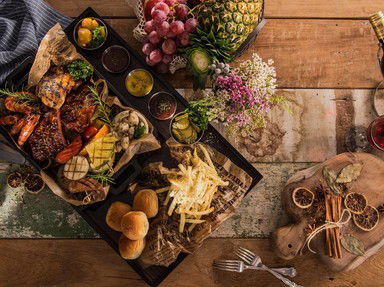Quiz Answer Key and Fun Facts
1. Dahl - "James and the Giant _____"
2. Steinbeck - "The _____ of Wrath"
3. Barrett - "Cloudy with a Chance of _____"
4. Chekhov - "The _____ Orchard"
5. Seuss - "Green _____ and Ham"
6. Steinbeck - "_____ Flat"
7. Cormier - "The _____ War"
8. Flagg - "Fried Green _____ at the Whistle Stop Cafe"
9. O. Henry - "_____ and Kings"
10. Burgess - "A Clockwork _____"
Source: Author
trident
This quiz was reviewed by FunTrivia editor
looney_tunes before going online.
Any errors found in FunTrivia content are routinely corrected through our feedback system.
